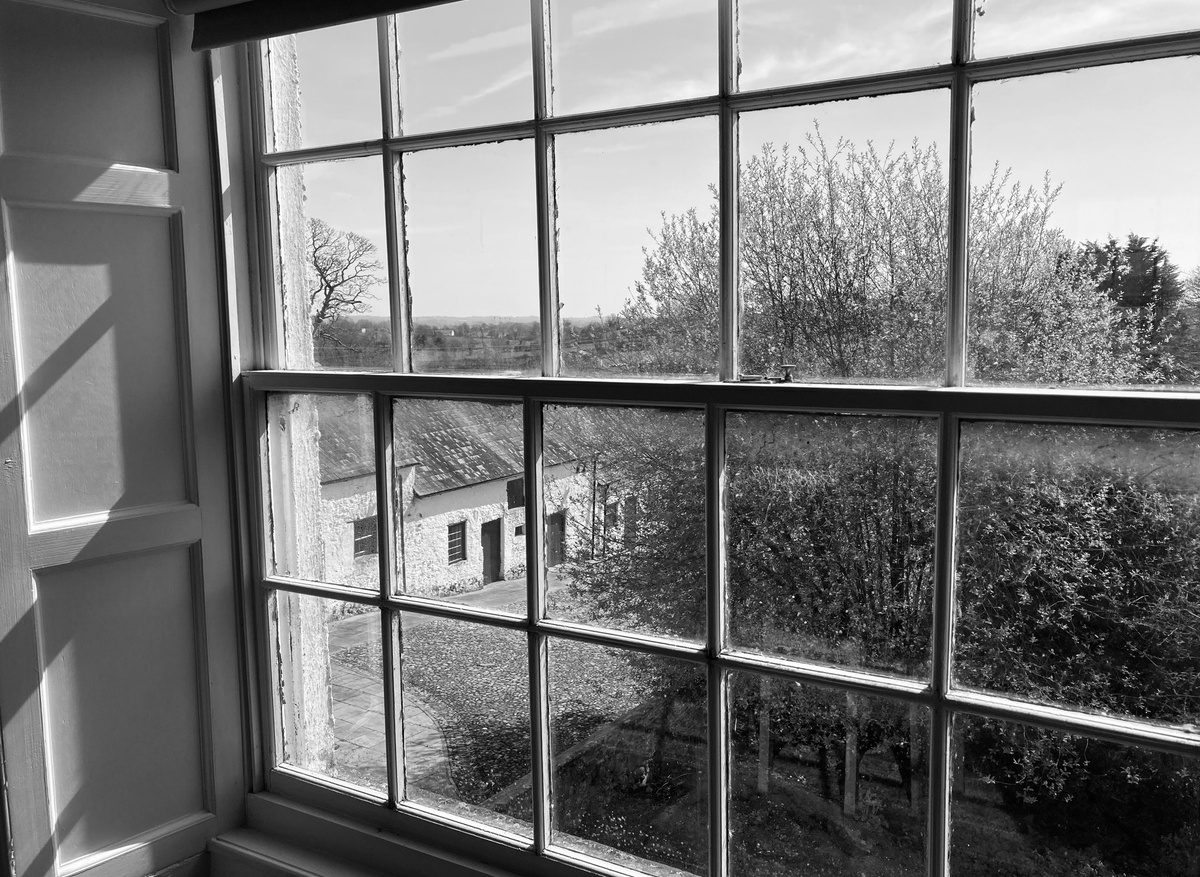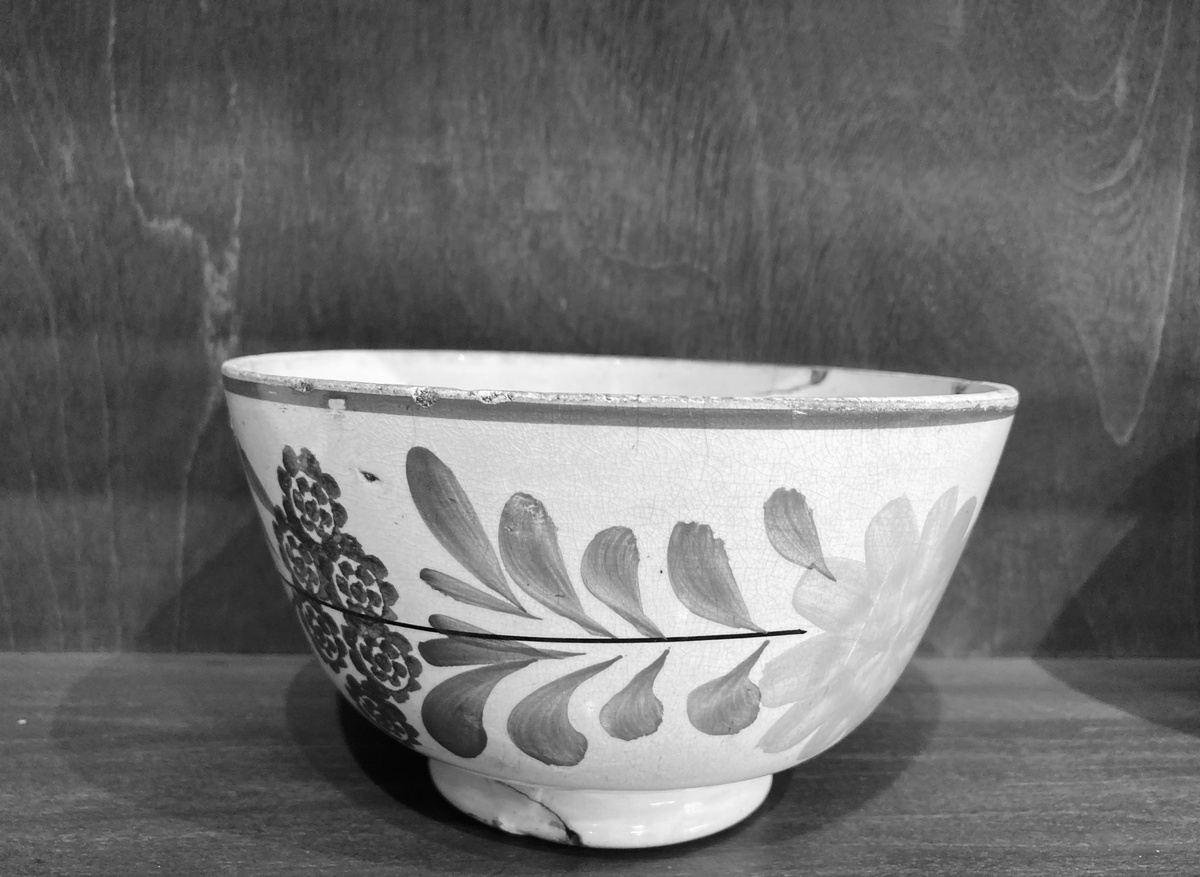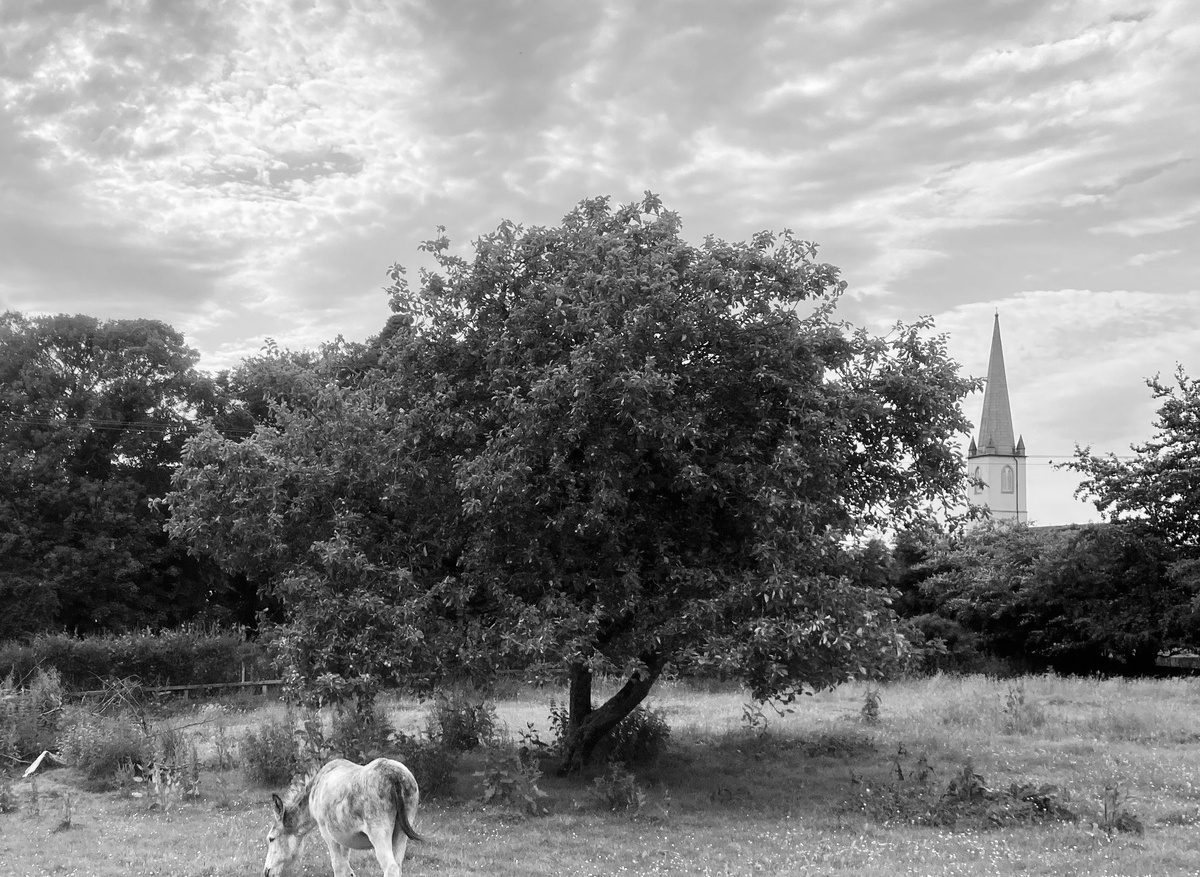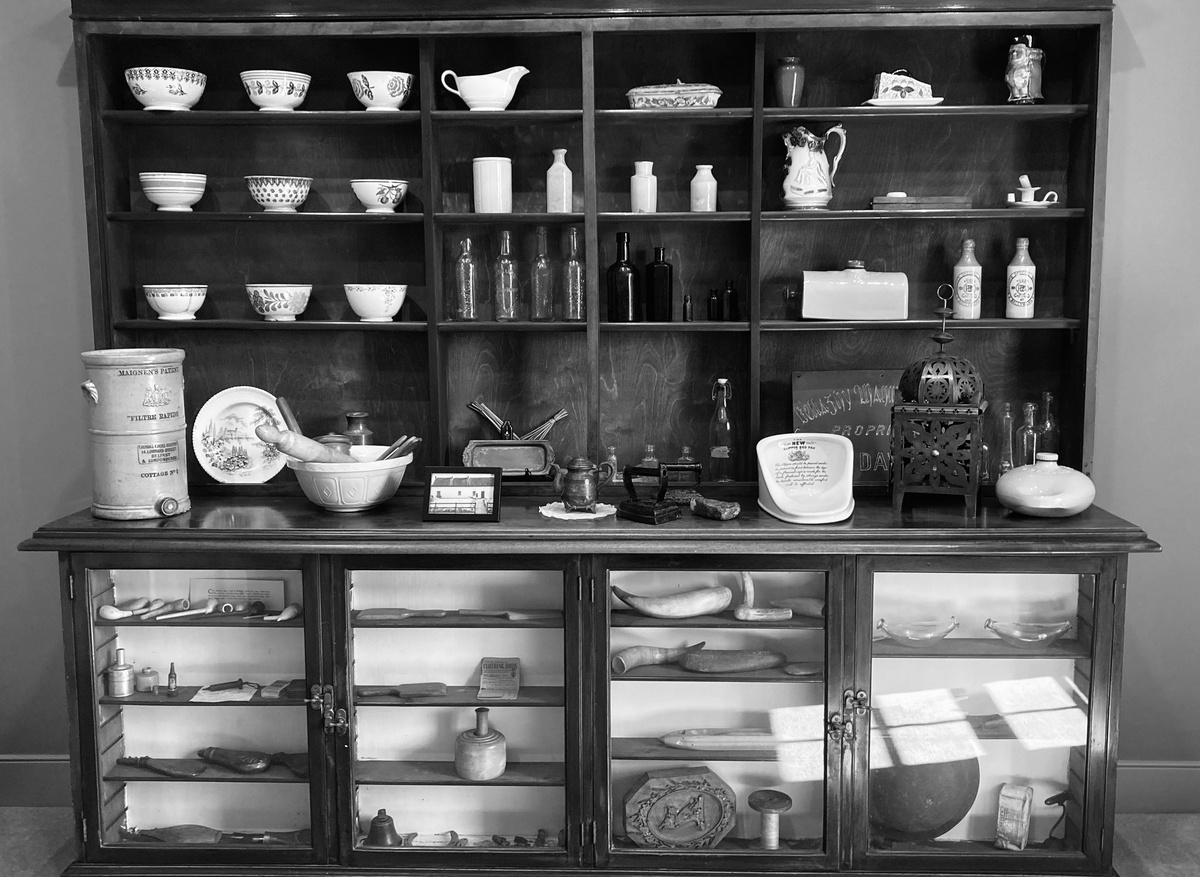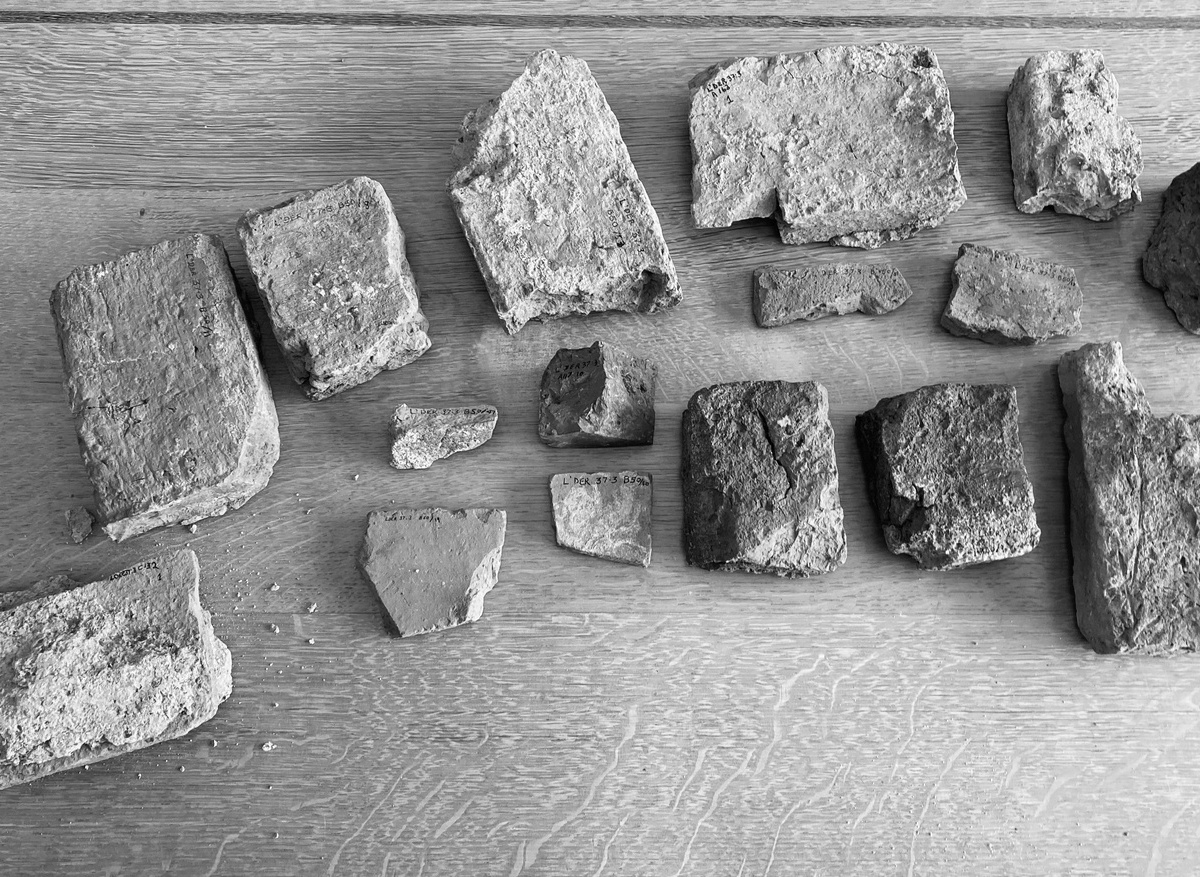A Still Life in a Familiar Place
On a warm summer’s morning, I travel through four counties of Northern Ireland to reach my destination. I am drawn back to a place that has become a familiar dwelling for my working day. Bellaghy Bawn (or Castle, as it is locally known) is a State Care Monument in the ownership of the NI Department for Communities. Conservation work will be underway soon to transform the Monument into a creative writing hub. For now, the building is tranquil, but I have much to do.
Since April, I have appraised 800 portable items including 116 unique paper records, 183 artefacts, and 167 folk items that were donated by local families. 334 items are now elsewhere. Everything else needs a temporary retreat before they return. Today, beyond that list, I will spend time with two items. A bowl and a brick. I’m taking time to think about things with the spectrum of archaeology.
It is a privilege to sit in the main house at one of its Georgian windows (Image 1). The sun is flooding the space. I am focused on a set of nine hand painted ceramic bowls dating from 1910-1914. They sit at the end of a shelf, set up high like a still life (Image 2). I need to capture photographs for a catalogue on various folk items, but a note attached to one of the bowls slows my progress: From Katie McKenna’s cottage, given to her granddaughter.
The ceramic bowls were used by the McKenna family at their thatched house located half a mile from the Bawn. As the bowls held memories from their grandmother’s kitchen, the McKenna family donated them in 1996 for better care at the “castle”.
The building heats up in the summer sun, so I escape to the orchard (Image 3). There, I start to think of the monument as a site for care and protection. To Katie McKenna and her generation, the Bawn was her local doctor’s surgery. Established by the Vintner’s Company in 1832, Dr George Thompson lived there until 1925, and his daughter Dr Frances Thomas continued providing support for local families up to 1986. Later transformed into a museum, the local community perceived the Bawn as a place of care and safekeeping for the things they valued.
I recall Estyn Evans referring to Irish people placing suspicion or superstition on things. Bowls could be named and treated as individuals. Things held important social memories, they expressed beliefs and native values. The matriarch of a household would often hold an item when telling its story to the generations who met around the kitchen table. Each item was a member of the family.
Katie’s bowls are a trace that signify an absent presence.
The Bawn not merely shelters things but is itself an archive. Every shelf bears traces of memory (Image 4). Simply, the safekeeping of a folk collection at the Bawn is an act of sharing things into the future.
Listing all the items at the Bawn has been a kind of archiving, a gathering up and making sense of the scattering of things. Bellaghy Bawn encompasses over 400 years of presence, so this “archive” is random, and it needs a sense of cohesion.
What connects Katie’s bowl with the bricks laid out in front of me (Image 5)? Are they two parts of a collection of things, or are they separated by context? Back sitting at the window, I connect with archival services to read early records that are available online. From contemporary documents, the story of the brick is revealed in minutes.
On 17 December 1613 a meeting was held at the Guildhall in London to determine which parcels of land would be allocated to the livery companies of London for their plantation in Ireland. The first agent to be employed by the Vintners Company was Henry Jackson, who arrived in Ireland in 1614. Jackson chose the village of Bellaghy to be the main settlement of their portion and renamed it Vintnerstown. The construction of new houses began in 1615, but progress was slow. The Company employed John Rowley to continue the work, and when he died in 1617, construction continued under Baptist Jones. Contemporary correspondence from Baptist Jones refers to his whereabouts as Vintnerstown.
In a survey of the Londonderry plantation, Captain Nicholas Pynnar noted between 1618 and 1619:
“In the Hands of Baptist Jones, Esq., who hath built a Bawn of Brick and Lime, 100 feet square, with two round Flankers, and a good Rampart, which is more than any of the rest have done.”
By 1622 many of the buildings were complete. Thomas Raven’s map of the town shows fifteen timber-framed houses with brick gables, the Bawn at the top of the main street, a market cross and a church.
The defensive Bawn was built with brick during the seventeenth century, including those laid out on the table which were uncovered through excavation in 1995. The brick buildings standing today enclose and secure a collection of items - each with their own personality - that are valued by local communities. The Bawn continues to be a site of protection, and a site where archaeology is the foremost discipline of things.
Surrounded by the valuables local people have donated to their “castle”, and the finds from excavation at the site, there is a kind of spectrality here. The place is still alive. Everything is placed in State Care for safekeeping. It is the concept of care that binds all these things together – including a bowl and a brick - in one place.
What about a still life for the archaeologist? Who cares? What do a bowl and a brick at Bellaghy suggest to our discipline? Sometimes we can gain new insights by slowing down, taking time, and seeing things afresh. A day in archaeology can be …. a still life in a familiar place.
I leave again mindful of all that still needs to be done…

